On our return from Mexico in May 2014, Eileen and I found that the nesting season in South Florida was in full swing. Our morning walks around the boardwalk at Wakodahatchee Wetlands in western Delray were constantly enlivened by baby birds of all shapes and sizes growing, feeding or being fed, and exploring the world around them.
The babies ranged, at least from a human perspective, from ungainly to adorable. Definitely on the ungainly side were a brood of downy young Anhingas (Anhinga anhinga), looking quite dinosaurian (reasonably so, since birds are dinosaurs, after all).
Equally dinosaurian were these nearly-grown young Wood Storks (Mycteria americana).
Perhaps less saurian, but certainly odd-looking, were these young Glossy Ibises (Plegadis falcinellus). The parents were not at the nest when I took these photographs, and it took me a while to decide which species of ibis (out of a choice of two) these were. This plumage, with its parti-colored bill, is not in the standard field guides and I had to do a bit of digging around in my library to find a description of it.
Are these oddly-coloured head and bill markings some sort of signal to the parent bird telling it where to deposit food? Or are they an evolutionary reminiscence of the adult plumage of some long-vanished ancestor? I don't really know.
Unquestionably the most charming babies on view were the chicks of the most graceful adult birds at Wakodahatchee, the Black-necked Stilts (Himantopus mexicanus).
Aside from their delicacy and grace, stilt chicks differ from the young of ibises, storks and anhingas in that they are not nest-bound. Almost as soon as they hatch, downy young are able to explore their habitat and to find and eat food for themselves. Ornithologists have long termed baby birds of this type precocial, as opposed to the altricial young of (say) songbirds, which are nest-bound, helpless and incapable of feeding themselves until they fledge.
Ducklings, like these Mottled Duck (Anas fulvigula) chicks, are not only adorable but, like downy young stilts, entirely precocial. With a single exception, the aberrant Magpie Goose (Anseranas semipalmata) of Australia (now usually placed in its own family), no duck feeds its young; ducklings must find their own food from the day they hatch.
This is one way (of many) that ducks differ from swimming rails, including Common Gallinules (Gallinula galeata), birds that visitors to Wakodahatchee often mistake for ducks. Though downy young gallinules are able to swim for themselves, their parents continue to feed them for (depending on the species) anywhere from a few days to several weeks.
These gallinule chicks are clearly begging to be fed, their featherless wings extended in excitement as their parent approaches with breakfast.
Alongside adults and downy young gallinules were fully-fledged, independent young. Common Gallinules take forty to fifty days to reach independence, so these birds are the result of a brood that probably hatched a month to six weeks before the little birds in the previous sequence.
Purple Gallinules (Porphyrio martinicus), unlike their cousins, only feed their chicks for the first two to four days after hatching (sometimes, at least, with older juvenile "helpers" pitching in). Although these downy babies were certainly being guarded by their parent, they appeared to be finding food on their own.
Like the ibises, the baby Purple Gallinule has a remarkable multi-coloured beak. Why? A 2004 study suggests that in rails, colourful bills and other ornaments in downy young (including the bright red patches on the heads of Common Gallinule chicks) may be a response to sibling rivalry, evolving in species whose chicks compete with each other to be fed, even if only for a few days.
The most obvious nesting birds on the reserve are the various species of heron, including these nearly fully-grown Great Blue Herons (Ardea herodias).
These young Cattle Egrets (Bubulcus ibis) will probably have only a short while longer to remain in their nests, if they are not independent already.
Various Tricolored Heron (Egretta tricolor) families we're at different stages of the rearing process at the same time – obviously, their breeding cycle is somewhat staggered. Some of the chicks were still covered with down, and were obviously quite young.
Though still in down, this chick seems a bit older than the babies in the previous picture.
Heron chicks are altricial. They remain in the nest for some time, taking food from their parents and mastering the art of swallowing fish (headfirst, so the spines don't get stuck in your throat).
Juvenile Tricolored Herons, with their gaping bills and unruly topknots, remind me somehow of a gang of rebellious teenagers.
A closer look reveals birds that are even more colourful than their parents – not to mention somewhat more garish-looking...
...and with plenty of personality - a feisty next generation!







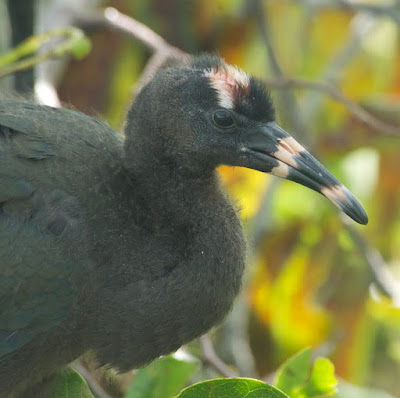
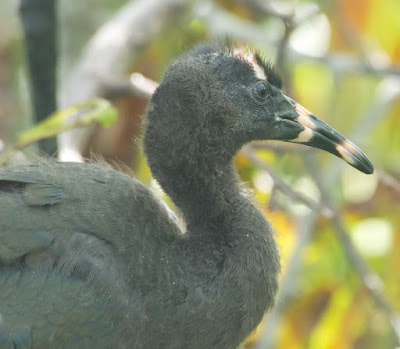
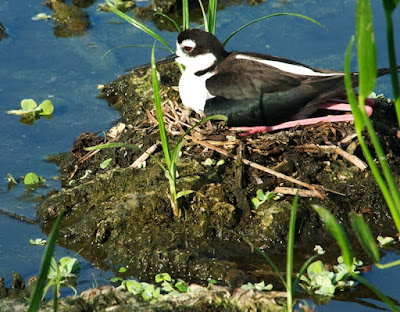

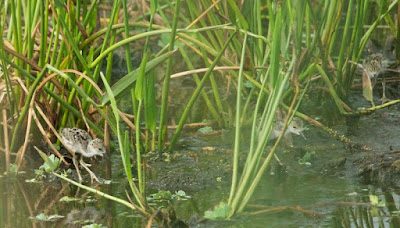


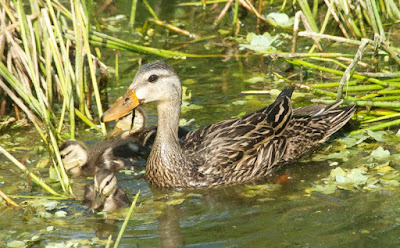



































No comments:
Post a Comment